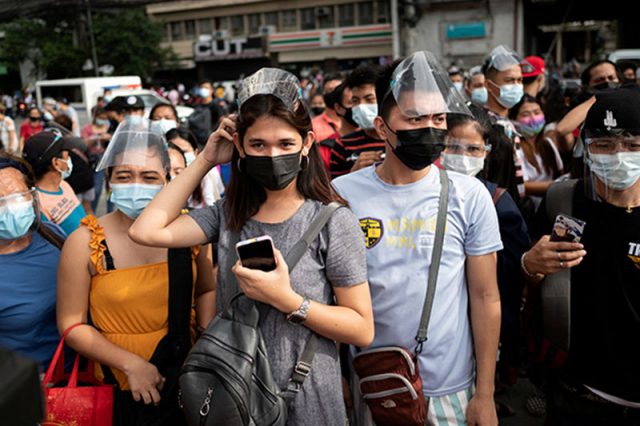
As the government lifted curfew hours initially set in Metro Manila, renewed appeals to immediately forego another COVID-19 policy were mounted online.
Chairperson Benhur Abalos of the Metro Manila Development Authority on Wednesday announced that there will no longer be restrictive hours in the capital region starting November 4.
The lifting of the curfew was meant to consider the hours of shopping malls which the MMDA has asked to open at 11 a.m. instead of 10 a.m. during the holiday season.
This is to supposedly ease vehicular traffic, especially since the number coding scheme remains suspended.
“The lifting of curfew hours in Metro Manila will help spread out influx of people coming to and from malls to further reduce the risk of virus’ transmission,” Abalos was quoted as saying in a statement.
Curfew hours for minors, on the other hand, will be subjected to existing city ordinances.
The curfew, which has been in place in the metro since the first surge of the coronavirus cases in March 2020, currently lasts from 12 a.m. to 4 a.m.
Last August, its imposition amid enhanced community quarantine spurred concerns of public transportation crowding and an increase in traffic jams since commuters would attempt to reach their homes before the curfew starts.
It was initially implemented in a bid to reduce people’s mobility to supposedly slow down COVID-19 transmission.
Coronavirus cases in the National Capital Region saw a significant decrease and slowly returned to pre-Delta numbers. The health department on Wednesday reported its lowest number of new cases since February 24 of this year.
Following reports of curfew removal, some Filipinos renewed appeals to ditch another pandemic protocol—the use of face shields.
“Face shield when?” a Twitter user said in response to the news.
“Sana face shield naman,” wrote another online user.
“Finally, kelan ang face shield?” a different Filipino tweeted.
The IATF-EID first required the use of face shields in December last year to “effectively lessen the transmission of COVID-19.”
A few months later, more contagious variants would be detected in the country, beginning with the Alpha variant.
Face shields in pandemic
The Inter-Agency Task Force for the Management of Emerging Infectious Diseases (IATF-EID) on Tuesday bared that it is reviewing its controversial face shield policy as the country sees a decline of COVID-19 cases.
“I can confirm that while the number [of new cases] is decreasing, we are also talking about whether to continue wearing face shields,” presidential spokesperson Harry Roque said before.
“Marami ang nagsasabi sa IATF na itigil na ang pagsusuot ng face shield,” he added.
The Palace official stressed that the IATF has yet to decide if it will completely forego the plastic gear and that it remains mandatory for now.
Last September, the government has allowed its removal in outdoor spaces.
Davao City on Wednesday said that its residents can now use the face shield under voluntary circumstances in 3Cs or crowded places, close contact settings, and confined spaces. It is no longer required for other places.
Quezon City said that it might follow suit as well.
“It is just there for compliance. And if that is the case, then we might as well do away with it and just trust on wearing face masks,” Quezon City Mayor Joy Belmonte said on ANC’s “Headstart.”
Experts have previously said that face shields are not overall effective in stopping aerosol or airborne transmission of the virus causing COVID-19 and that face mask remains the ultimate protection.
A 2020 study published in the journal Physics of Fluids found that although face shields block the initial forward motion of one’s cough or sneeze, the expelled droplets can move around the visor “with relative ease and spread out over a large area.”
The simulation that the researchers performed showed that droplets remained suspended at the bottom of the shield and spread to the front and sides of the mannequin that was used for the study.
“For the face shield simulation, the shield initially deflected droplets toward the ground after a cough. But small droplets remained suspended at the bottom of the shield and then floated around the sides, eventually spreading about 3 feet (0.9 meters) to the front and sides of the mannequin. In some cases, the droplets spread backward, behind the mannequin, instead of forward,” the authors were quoted as saying.









